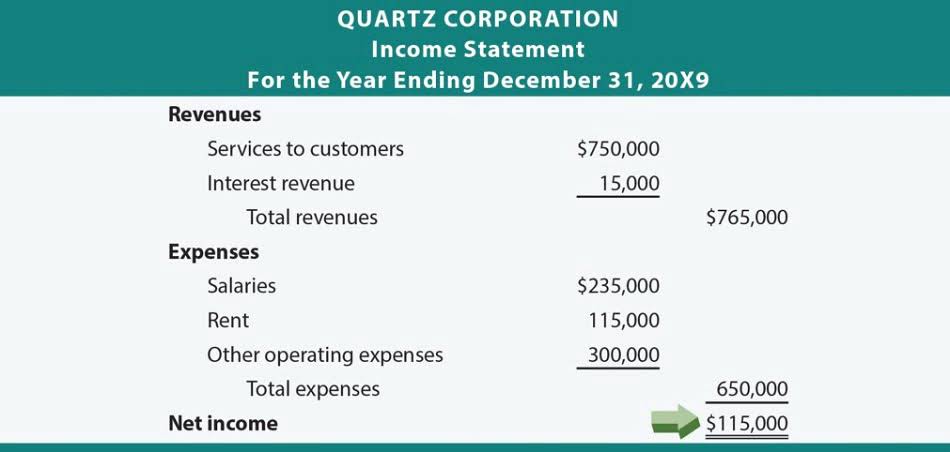
The retainer agreement should outline the Sk so that anything outside of the work agreed upon incurs an additional fee. However, making the most of a retainer agreement largely depends on the type of retainer agreement you choose. Retainers are a great tool to create a long-term bond with your client that could bring in more projects and referrals.
How Much Is a Lawyer Retainer Fee in the United States?
The retainer structure often involves monitoring trust accounts to cover billing as legal services are rendered. This financial arrangement fosters trust and assurance for clients https://www.bookstime.com/ seeking dedicated and reliable representation. On the other hand, unearned retainer fees are the fees that a lawyer holds in the dedicated retainer account. It is a prepayment that lawyers can deduct after the completion of a matter.

What is an average lawyer retainer fee?
The primary function of a retainer fee is to guarantee a professional’s availability, often covering future services or maintaining continuous support. Unlike project-based payments, these fees offer flexibility in planning and budgeting for ongoing work. Having a lawyer on retainer means you’ve secured their services on an ongoing basis.
Typical Retainer Fee Agreement Terms
This fee ensures that the professional is available to work on the client’s case or project and is often used to cover initial costs or guarantee ongoing availability. It acts as a commitment from the client, reserving the professional’s time and services for future work. Retainer fees are an upfront or advance payment that a client pays to its lawyers for future legal services. It is a prepayment method and a commitment for both parties to work together. Lawyers calculate these fees by multiplying hourly charges by the number of hours it will take to complete the case. Lawyers hold the fee in a dedicated account and deduct it after they complete the work.

On the other hand, hourly billing can be more appropriate for short-term projects or tasks with a clearly defined scope. This method ensures that professionals are compensated for every hour worked, which can be advantageous in situations where the workload is unpredictable. However, hourly billing can also lead to financial uncertainty for clients, as costs can quickly escalate if a project takes longer than anticipated. This model requires meticulous time tracking and transparent communication to ensure that both parties are aligned on the hours worked and the corresponding charges. The agreement should detail how and when payments will be made, whether it’s a lump sum, monthly installments, or another arrangement.
Aspects of a Lawyer Retainer
- Try CaseFox today and see how it can make the process of legal billing efficient for you.
- Earned retainer fees are often not refundable to the client since the lawyer has already earned the fee via the provision of securing legal services.
- Retainer fees have been prevalent in professional industries such as law and consulting for many years.
- Typically, unused retainer time runs out, so the client can’t get their money back or carry it over to the following month.
- It’s important to note that some service providers require both a retainer fee and an hourly rate or project fee as part of their billing structure.
- In addition to a lawyer’s retainer and hourly fee, clients are often expected to pay certain other expenses related to their case.
As mentioned above, many attorney fee agreements do not require a retainer to be paid by a prospective client. The most common type of fee agreement that does not require a retainer is a contingency fee agreement. In short, it is possible to recover attorney’s fees in a civil lawsuit, including the initial retainer fee paid to secure an attorney’s services. Attorney fees are often made recoverable through what are known as fee-shifting statutes. As mentioned above, a well written attorney fee agreement will outline both how a retainer fee is used, and how the retainer fee is collected. For instance, some fee agreements will specify that the retainer fee is immediately collected in full to secure the services of an attorney.
- The fee is deposited into a trust account, ensuring it is used only for expenses related to your case.
- Under this arrangement, the retainer fee is replenished regularly, often monthly, to maintain a constant balance.
- In the example above, the retainer is considered unearned until the court case is closed and finalized.
- The retainer structure often involves monitoring trust accounts to cover billing as legal services are rendered.
- However, if things go differently than planned you can end up having to make another retainer deposit, or you may get a refund when the case is concluded.
- Retainer fees are once again usually kept in a trust account and used to meet legal costs and expenses of the case as they arise.
You might also need a separate bill every month or every quarter that shows the additional costs you still have retainer fee meaning to cover, which are typically due upon receipt. Define the scope of services, fee structure, duration, and contingencies to avoid ambiguities. If terms are clearly outlined, clients and professionals can prevent potential disputes and adjust expectations.
- Some jurisdictions do require a written fee agreement if the cost is expected to exceed a certain amount.
- Any unearned retainer fees that are not used can be returned to the client.
- Don’t be afraid to negotiate your retainer fee – after all, it’s called a retainer for a reason, it’s meant to hold onto some of your money.
- From here, just follow a few basic guidelines to ensure the project goes off without a hitch.
- We’ll go over the three most impactful ways to use retainers to improve client experience and increase referral opportunities.
- In this situation, an attorney has a separate trust account into which that retaining fee is deposited.

Retainer fees are an upfront sum charged by a professional in exchange for their services. Despite being commonly used in many professions, retainer fees come with certain drawbacks, mainly for clients. Moreover, service providers need to be mindful when crafting the contract agreement with clients. The terms must include detailed deliverables, timing, payment processes in exceptional circumstances like termination due to unsatisfactory results or unexpected events. A popular business tycoon had litigations that arose from copyright infringement. For clients, retainer fees give them priority access to services and peace of mind that their needs will be met.

Rocketlane for long-lasting retainer relationships
The amount of the retainer fee varies depending on the specific industry accounting and the complexity of the project. A retainer agreement with a lawyer is a contract between a client and a lawyer that outlines the terms of the legal representation. It spells out the nature of the services to be provided, the cost of such services, and how and when the lawyer will be paid. The payment part often involves a retainer fee, which is an upfront cost paid by the client to secure the lawyer’s services.